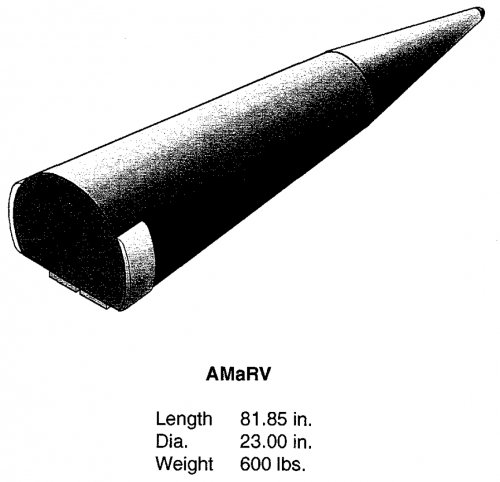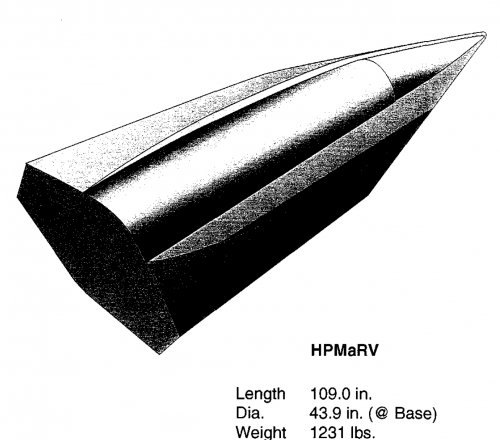I thought the GBSD program RfP and follow on budget documents do provide for a considerable amount of infrastructure upgrades? Wasn’t their just an announcement that funds this years are shifting from “the missile” to testing infrastructure?
It may be something of an updated announcemtne since "the missile" is obviously going to be delayed at this point. Updating and upgrading the testing infrastructure is overdue since the last ICBM moderinzation/upgrades are IIRC pushing 20 years old by now. But you need to have the missile itself defined at the very least in a general way to do anykind of upgrading of basic infrastructure which is where the requirement for utilization of existing MMIII infrastructure comes in. While the MMIII has been modernized and upgraded the actual handling and maintenance faciities and structures have not been and what was added during the Peacekeeper deployment is of limited utility in that regard.
Planning is to upgrade and expand supporting systems which includes complete replacement of some of the buildings used for maintenance and stoarge but there are limited areas in which to place those new structures in the existing bases. Eventually once the new missile gets closer to deployment there will be upgrading and modernization of the deployment systems to help accellerate deployment but again actual physical 'room' to do a lot of this is limited. That 'significant amount' of money is assuming that the infrastructure being upgraded is mostly already in place and available for the task. Quite obvioulsy if you have to go with a totally NEW (aka larger and more 'capable' such as a new-model Peacekeeper) then that "significant amount" quickly becomes a 'staggering amount' instead. LIke I said this WAS a clear lesson from the Peacekeeper itself.
There were at least 100 deployed originally. Missiles were not laid up in 1990.
Peacekeeper's? 100 were 'deployed' into the system but no more than 50 were every availble on alert in silo's. Most of them were laid up in storage buildings and/or at the manufacuter's site in 'ready-storage' to be shipped into the system.
Why wouldn't they be able to build them? Part of keeping proper documentation is exactly about retaining that ability.
What part of having to rebuild the productin and manufacturing systems and supplies lines is not clear? What part of the Peacekeeper NOT being either effective or economical in actuality was not clear? Sure it was a nice 'big' missile with a lot of warheads but it turned out to be very expensive, (even more so when Congress cut the productin and deployment numbers which should be a familar story) and difficult to maintain and didn't fullfill the role replacing the Titan II as originally envisioned. Sure we've got all the documentation and history at our finger tips and it will be shared with the new missile developers but it should be telling that the requirement is specifically NOT for another big missile like the Peacekeeper.
They're building a liquid-fuelled GBSD?
The Russians? Yes. The US? No. We're quite satisfied with the utility and economics of solid propellant missiles.
My argument was based on cross-sectional area. 1 W87 in a Midgetman has far more space around it than 10+ in a Peacekeeper.
Oh, so we're NOT talking about an HGV then but the amount of room a W87 has? Bit different from what we were supposed to be discussing but lets see...
Peacekeeper had around a 7ft diameter "payload" interface, MMIII has about a 5ft interfce while Midgetman had a bit over 3ft. The Mk-21RV has a base diamter of about 22 inches, so yes a single W87 in a Mk21 has room to allow decoy's and counter-measures which WERE carred in all the above missiles with or without multiple warheads.
HGV's on the other hand have been much larger than the '21in' Mk21, so we're back to the same point: If the MMIII with around 5ft of space may have problems them it is very unlikely that it could be crammed into a 3ft space.
They can use that equipment for the Midgetman.
The equipment was never produced in any number as the program was cancled before deployment. What they WILL use is modified and new build MMIII equipment as it's available and in production. Like the Peacekeeper equipment as it was not going to be used the equipment was destroyed and scrapped. Do we have the plans and designs available? Why yes we do and what can be used to design and build equipment compatable with the new missile will be used but it won't be the "Midgetman Equipment" or systems.
Upgraded? Yes, massively so, in an F-18C to F-18E kind of way. Different dimensions, range, payload etc.
That's not an "upgrade". It's a completely different aircraft that happens to look similar.
That was my point.

An R-29RMU2 is about as similar to a vanilla R-29 as an F-18E is to an F-18C. It's 15% longer, 5% wider, 25% heavier and can carry 12x as many warheads.
Wow, that's amazing! Except... Well it's NOT. The R-29RMU2 IS pretty advanced over the R-29 which were initially deployed in the mid-70s but that's not that impressive when you consider the R-29RMU2 is derived from the R-29RMU which makes the supposed 'gains' much less impressive. Longer? Nope or it wouldn't fit in the tube. Heavier? Why yes but this is actually a problem not an advantage. Bigger around? Yep, added a whole 0.1m to it to allow more propellant to carry the extra weight. Can carry 13X as many warheads? Eh, no, not even if we're talking the actual R-29 rather than the missile it was developed from. The R-29 was deployed with two (2) medium to high yeild thermonuclear warheads. The R-29RMU carried 4 medium to high yeild warheads with advancec penatration aids as well. The R-29RMU2 CAN carry up to 12 warheads, (10 more than the R-29, 8 more than the R-29RMU) but only if they are all low-yeild warheads and no penatration aids are carried. It can carry 10 low yeild warheads AND standard penatration aids, or 8 with enchanced penatration aids or 4 medium yeild warheads with standard penatration aids.
Low and medium yeild warheads can be carried as a mix such as four low and four medium but no penatration aids down to 4 medium and four low yeild with some standard penatration aids. It does not seem to be able to carry an HGV warhead due to the size of the HGV, (about 1.5m in length)
More like going from the F-18B to the F-18C not the E.

And even the old UR-100N is now carrying HGVs.
Actually the UR-100N-UTTKh which the HGV was specifically designed to be carried on. The missile can carry one (1) HGV with no penatration aids as opposed the normal load of six (6) medium to high yeild warheads and penatration aids. It is reported that the warhead yeild of the HGV is supposed to be around 2mt but this is not confirmed though likely given large size (again 1.5m/5ft long) and mass (40mt/88,185lbs) with the expected loss or range on most platforms to be 'made-up' (one hopes) by the boost-glide ability of the HGV itself. Even carrying more than one HGV on such large missiles as the R-36, (standard throw weight to maximum distance is 8,800kg/19,402lb) is problematical. Note below the R-100N-UTTKh with the HGV managed to hit a target a little over half its nominal range, (6,000km compared to 10,000km standard) and this would be expected to carry across all platforms.
Find out how far is it from Dombarovsky Air Base, Orenburg Oblast, Russia to Kura Missile Test Range, Kamchatka Krai and see it on a map.

www.freemaptools.com
The question is then is a new missile with greater capability and performance that works with the existing support systems going to address that need?
It's certainly more likely to than a less capable missile.
My point exactly

Which is why they are looking at it from that direction rather than planning an 'all-new' missile and infrastructure. So we are on the same page then?
Randy



